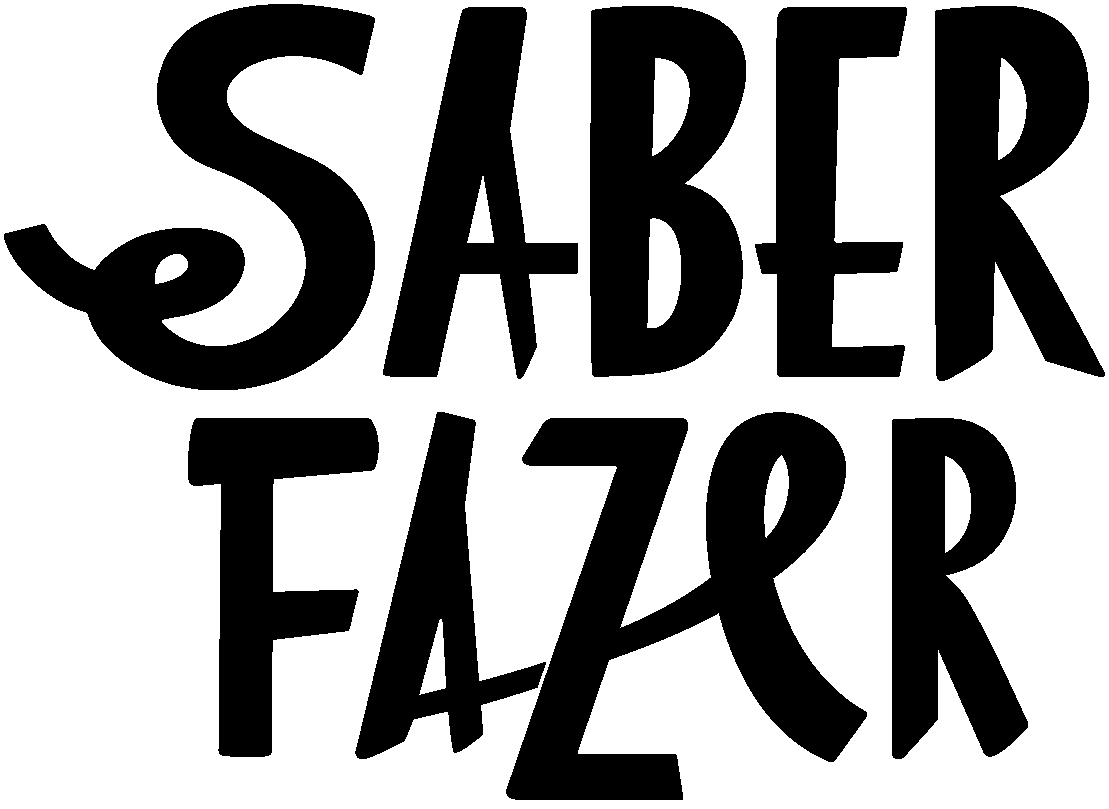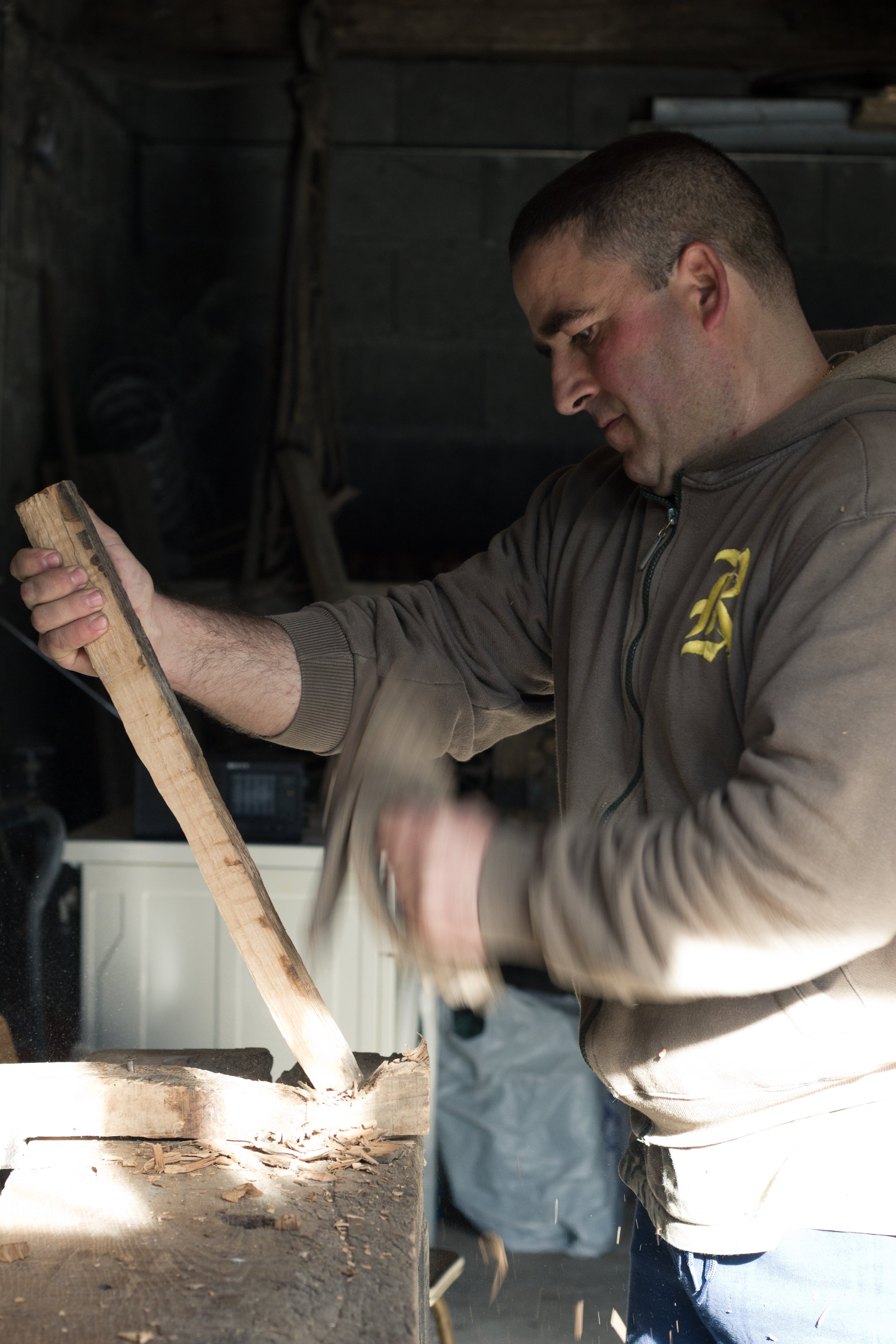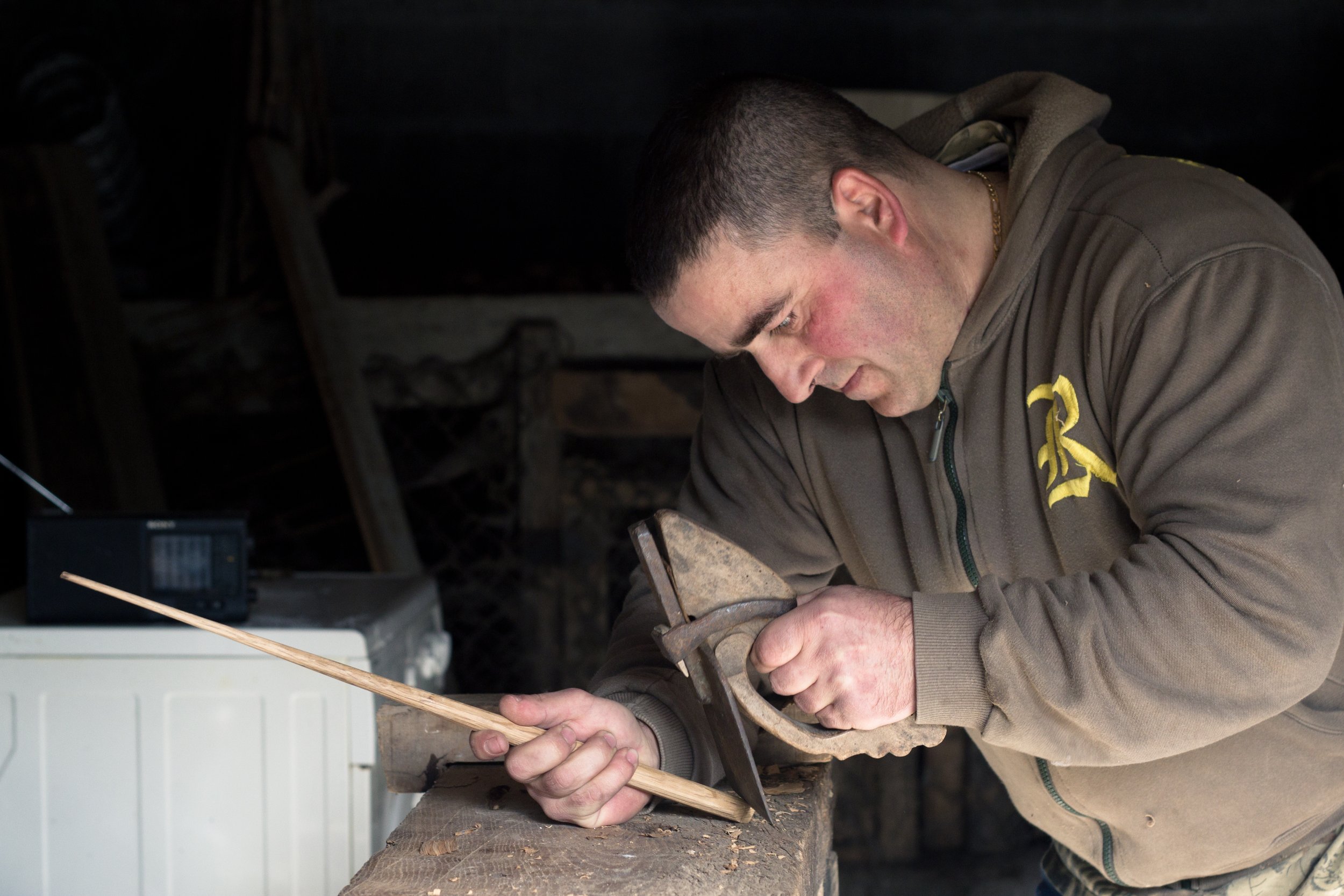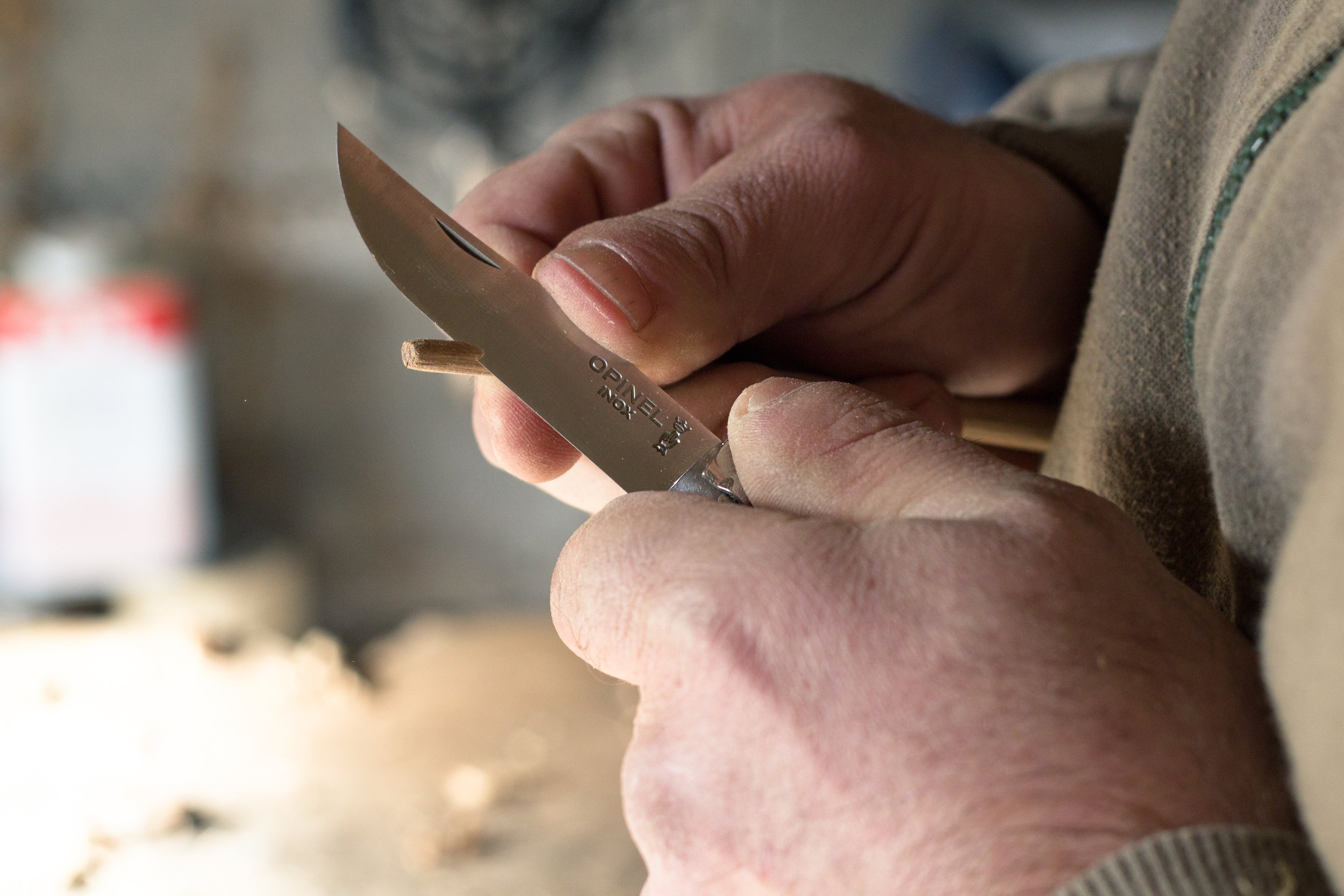Fazer um fuso com o Zé Manel
Quando comecei a aprender a fiar, tornou-se indispensável arranjar uma roca e um fuso para mim. Como tive a sorte de estar a aprender com quem sabe o que faz no que diz respeito à fiação, fui logo informada das características de um bom fuso: são de carvalho, para que tenham um peso próprio adequado, são esculpidos à mão do início ao fim e têm uma mainça bem definida.Fui ainda informada, e por uma voz unânime, de quem os sabia fazer bem: o Zé Manel, que é nada mais nada menos que o filho da D.Ilídia. Convencer o Zé Manel a fazer uma demonstração demorou mais tempo que o esperado, mas no dia em que estive com a mãe dele a lavar lã, convenci-o finalmente a fazer um par de fusos para mim.
When I started to learn how to spin wool, it became indispensable to get my own distaff and spindle. As I was lucky enough to learn from those who know what they are doing in regards to spinning, I was immediately informed about the characteristics of a good spindle: they’re made of oak, so that they may have the appropriate weight, they are handsculpted from beginning to end and they have a well-defined screw on the tip. Moreover I was informed that the person who knew how to make them well was Zé Manel, no more than Ilídia’s son. Convincing Zé Manel to show me his work took longer than I expected, but later in the day I spent with his mother washing the wool, I finally persuaded him to make me a pair of spindles.
1. RACHAR O TRONCO
Se bem rachado, de um tronco de carvalho, nascem dois fusos. O tronco é rachado num só movimento e perfeitamente na vertical, seguindo os veios da madeira para que seja possível esculpi-lo até ao final, sem que a ponta venha a quebrar.
1. CHOPPING THE TRUNK
If the oak trunk is well chopped, two spindles can be made out of it. The trunk is chopped in one swift movement, perfectly vertical and following the wood grain so that it is possible to sculpt it until the end without the tip breaking off.
2. DAR FORMA AO FUSO
Cortado o tronco de onde vai ser esculpido o fuso, começa-se por dar forma com a enxó, cortando o tronco enquanto se roda o mesmo, para garantir o equilíbrio da peça.Estando o tronco mais magro e próximo da espessura final que o fuso irá atingir, utiliza-se a plaina para continuar a dar-lhe forma, agora de uma forma mais precisa e tratando de lhe dar a forma cónica tradicional.
Na ponta mais estreita será esculpida a mainça, a rosca onde enrola o fio que está a ser fiado.
2. SHAPING THE SPINDLE
After the chopping the trunk, it’s time to shape it with the adz. It should be cut while being rotated, so as to guarantee the equilibrium of the piece. When the trunk is smaller, closer to the final thickness of the spindle, a fillister is used to keep shaping it, now more precisely and towards a traditional conical form. On the narrow end, the screw that holds wool thread, will be sculpted.
3. ESCULPIR A BASE
Novamente com a enxó, parte-se para dar a forma geral à base do fuso. Depois de marcar o contorno da base com a navalha, afina-se a forma com o formão. A base, é mais larga que a ponta e, consequentemente mais pesada, conferindo mais peso à base do fuso, para que este seja eficaz a esticar e torcer as fibras.
3. SCULPTING THE BOTTOM
Again with the adz, an overall shape is given to the bottom of the spindle. After contouring it with a pocket knife, the shape is tuned with a chisel.This end is wider and heavier than the tip, making it more effective when it comes to stretching and twisting the wool fibers.
4. LIXAR
Atingindo o fuso a sua forma final, é necessário lixá-lo. Em primeiro lugar, o Zé Manel usa uma lixa fina e depois um pedaço de vidro para suavizar a superfície.
4. SANDING
Having achieved the final shape of the spindle, it's necessary to sand it. First, Zé Manel uses a finer sandpaper and afterwards, a piece of glass to smooth the surface.
5. ESCULPIR A MAINÇA
A mainça é a rosca da ponta superior do fuso e é um pormenor essencial para que esta ferramenta funcione devidamente, pois é aqui que o fio vai enrolar e fixar, para que se possa fiar adequadamente. Aqui, a mainça é esculpida à mão. Para não quebrar a ponta, em primeiro lugar o Zé Manel marca o percurso com a navalha e apenas depois escava a abertura.
5. SCULPTING THE SCREW
The screw at the narrow end of the spindle is an essential detail for this tool to duly work, because it is here that the thread will be fixed, so it will spin the fibres properly.
6. TESTAR
Um bom fuso, além de agarrar bem o fio que está a fiar, para que se possa fiar em suspensão, gira de forma perfeitamente concêntrica. É por isso que, no final, o Zé Manel testa o fuso pendurando-o num fio e girando-o sobre si próprio.
Se for necessário aperfeiçoa a mainça, mas a experiência que lhe permite fazer fusos perfeitamente concêntricos usando apenas a enxó e a plaina é a mesma que lhe permite fazer mainças perfeitas à primeira tentativa.
6. TESTING
A good spindle, not only grabs the thread that is being spun so it may be done while suspended in the air, it also spins in an almost perfectly concentric way. That is why in the end Zé Manel tests the spindle by hanging it in a thread and spinning it on to itself. If necessary, the screw is corrected, but the experience that allows him to do perfectly concentric spindles using only an adz and a fillister is the same one that allows him to do perfect screws at the first attempt.
( A big thank you to Ana Almeida Pinto for translating this to english!)



































